Information
- Country
- Vietnam
- LuxDev's Regional office
- Asia Office
- Sector
- Environment and climate change
- Partner execution agency
- Thua Thien Hue Provincial People’s Committee
- Implementation period
- 1 July 2018 - 31 December 2022
- Total duration
- 54 months
- Total budget
- 2,961,000 EUR
- Contribution breakdown
-
- Luxembourg Government
2,961,000 EUR
Final evaluation
With its long coastline and high coastal and urban population densities, Vietnam is one of the most exposed countries to detrimental Climate Change effects -- notably sea level rise, saline intrusion, loss of land and property, and food insecurity. Vietnam’s current policies, strategies and plans on climate change and green growth are an expression of global commitments, and a reflection of the awareness of climate threats to livelihoods and assets. Key challenges, however, are the funding, competencies and technologies to implement these plans.
As the Luxembourg Official Development Assistance (ODA) to Vietnam is coming to a close, the opportunity arises to transform the highly regarded Vietnam-Luxembourg partnership into climate cooperation.
In March 2016, LuxDev, the Luxembourg Development Cooperation Agency was mandated by the Ministry of Foreign and European Affairs, on behalf of the Luxembourg Climate and Energy fund and the Ministry of Environment Climate and Sustainable Development (formerly the Ministry of Sustainable Development and Infrastructure), to formulate a mitigation (see VIE/401) and an adaptation intervention in Vietnam to be funded by Luxembourg international climate finance. Following Luxembourg’s first ever climate adaptation intervention in Vietnam 2013-2017, through the ODA-funded VIE/033 Climate-Adapted Local Development and Innovation Project in TT Hue province, and considering the very positive evaluations of that intervention, VIE/433 is in a position to bank upon the effective institutional structure, operational systems and implementation mechanisms that were put in place by that previous intervention.
VIE/433 aims to contribute to Vietnam’s goal of strengthening the resilience of people and the natural system to climate change, and specifically to assist local authorities and communities in coastal and lagoon communes to increase their understanding and resilience, and decrease their vulnerabilities to climate change.
To achieve these objectives, the project will aim for three expected results, to be achieved through six intervention areas (Tasks):
Result 1 Climate Change and Disaster Risk Reduction (DRR) – Government and community capacities to respond to climate change are enhanced
Task 1 – Increase awareness, understanding and coping capacity
Task 2 – Expand primary and secondary environmental education
Task 3 – Help establish an aligned Measurement, Reporting and Verification (MRV) system and become ready for direct access to climate finance
Result 2 – Small-scale infrastructure is better protecting people and their livelihoods
Task 4 – Implement climate adaptive and resilient physical infrastructure in target areas
Result 3 – Resilient Ecosystems help people better adapt to climate change
Task 5 – Promote methods for participatory management, use and conservation of natural resources
Task 6 – Support development of a market for organic farming as a new sustainable growth industry for the region
Similar to VIE/033, Project VIE/433 will target the same 29 communes in Quang Dien, Phu Vang and Phu Loc districts that, due to their location along the shoreline or around the lagoon as well as their low altitude, are considered most vulnerable to Climate Change impacts.
Commune Vulnerability Capacity Assessment reports that were done for all communes in 2014 indicate that in recent times these communes have severely suffered the adverse effects of climate extremes such as unusually cold weather, droughts, typhoons, floods, salt intrusion, and coastal erosion.
In alignment with, and response to national climate data requirements, VIE/433 will assess and help strengthen government climate adaptation MRV and general Monitoring & Evaluation knowledge, systems and skills so as to be able to properly monitor the effects of climate change and track the outputs, outcomes and impact of various adaptation and DRR interventions in the province. Thus, a comprehensive MRV system will be established within government, based on national and international climate MRV requirements.
Latest news
VIETNAM - Following James Bond’s Lead
In October 2003, the late Roger Moore, aka MI6 Special Agent 007 and the then Goodwill Ambassador for UNICEF, was on a trip through Vietnam, partially to raise awareness on the main cause of death of Vietnamese children below the age of 14: Drowning!
Drowning is not only a major issue in Vietnam. Rather, it is a problem faced by the developing world in general. Globally, over 372,000 people die from drowning every year. Over 90% of those deaths occur in low- and middle-income countries, and half are under 25 years old.
Since Roger Moore’s visit in late 2003, the statistics in Vietnam have not fundamentally changed, and drowning remains the number 1 risk of death for children. In the three years between 2015 and 2017, over 6,000 children drowned in Vietnam – averaging almost 6 deaths per day. This can happen in the community (78%) or at home (22%). Over 55% of child victims come from rural, low-income families.
These dramatic numbers are primarily due to a lack of understanding of water hazards and water safety skills, a lack of adult supervision, an unsafe water environment, and natural disasters. Notably, the latter is becoming more important due to the impacts of climate change.
In mid 2018, LuxDev started implementing its first two climate change projects funded from climate finance through the Luxembourg Ministry of the Environment, Climate and Sustainable Development (MECSD): one in climate change adaptation, one in mitigation.
Following the lead of Sir Roger, adaptation intervention VIE/433 included survival swimming for school kids in its action plan. Being one of the most climate-vulnerable regions globally, facing frequent and severe floods, and having one of the largest lagoons (220 km2) in the world, partners identified swimming skills for children as a most appropriate activity under the project’s Disaster Risk Reduction (DRR) component.
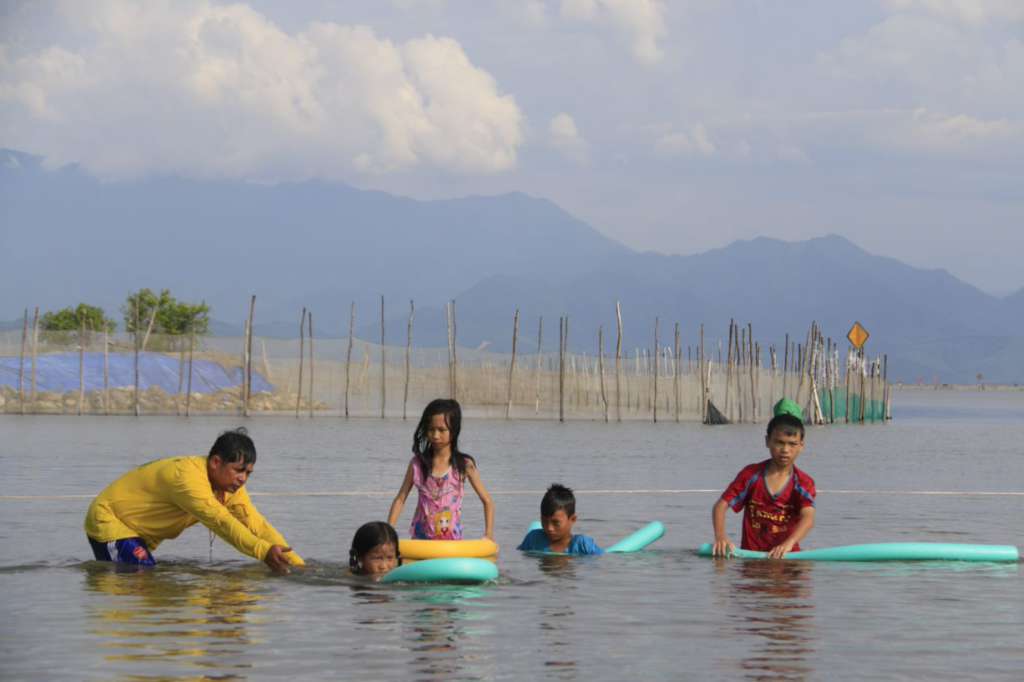
©Hue HelpAs a result, project VIE/433 joined hands with Hue Help, a British registered INGO, which since 2011, has trained 457 swimming coaches across Vietnam to international standards. Thirty of these coaches are physical education teachers in primary schools in the working area of project VIE/433, and in the last two years these coaches successfully trained 2,400 children aged 9-11, at a project cost of some 24,000 EUR, or 10 EUR per child.
©LuxDevAt the first closing workshop in late 2019, leaders of the provincial and the three district education departments expressed their gratitude with this perhaps unusual, but highly relevant intervention that contributes to climate adaptation in a fundamental way and saves children’s lives.

©Hue HelpSources: WHO Global Report on Drowning, Hue Help data
VIETNAM - The Energy Efficient Lighting Nationally Appropriate Mitigation Action (NAMA) pilot in Hue City (VIE/401) and Climate Adaptation and Resilience in TT Hue Province (VIE/433) projects take off.
The first Steering Committee for the projects ‘Energy Efficient Lighting Nationally Appropriate Mitigation Action (NAMA) pilot in Hue City’ (VIE/401) and ‘Climate Adaptation and Resilience in TT Hue Province’ (VIE/433) was held on May 10th 2019 and brought together representatives from the Luxembourg Embassy, LuxDev, Vietnam’s Ministry of Planning and Investment, Hue’s Provincial People’s Committee as well as other relevant VIE/401 and VIE/433 project stakeholders.
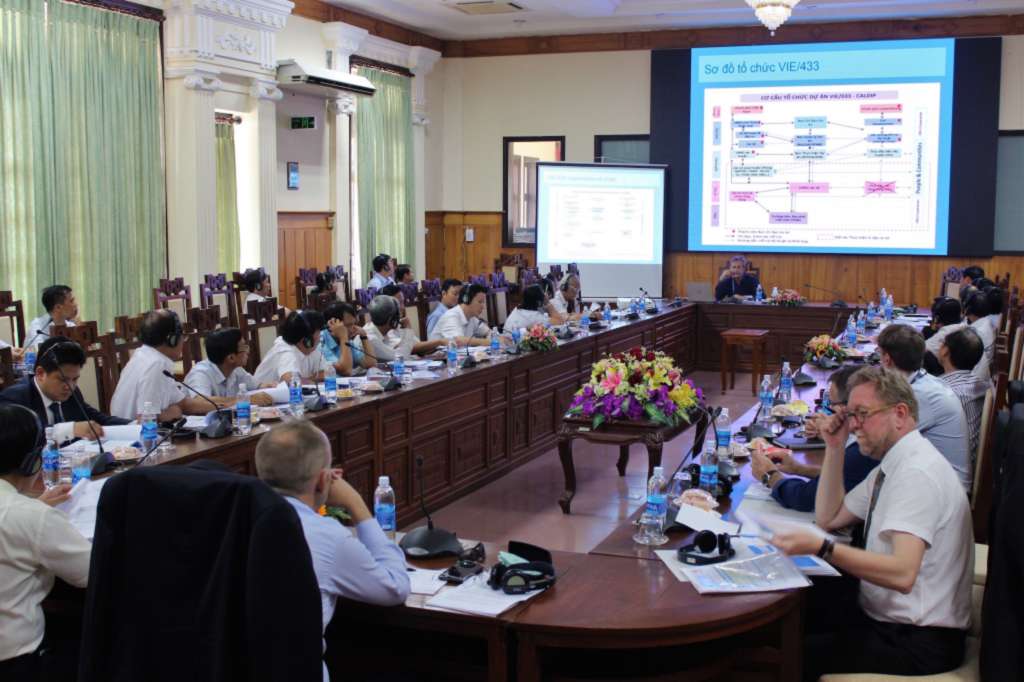 First Project Steering Committee Meeting for VIE/401 and VIE/433
First Project Steering Committee Meeting for VIE/401 and VIE/433VIE/401 and VIE/433 are the first projects implemented by LuxDev with funding from the Luxembourg Climate and Energy Fund (CEF). Furthermore, they are considered to be stepping stones for two higher level climate change adaptation and mitigation interventions in the future, to be funded by International Climate Finance (ICF), with possible additional Luxembourg funding.
VIE/401 stands out as LuxDev’s first Energy Efficiency project involving the replacement of conventional lights with less energy consuming Light Emitting Diodes (LED) lights. Through the installation of more than 22,000 LEDs, the project is estimated to achieve total cumulative energy savings of 17.7GWh, with associated Greenhouse Gas (GHG) reductions of 14,405 tCO2 up to 2029.
A key element of VIE/401 is the development of a robust Measurement, Reporting and Verification (MRV) system. Measuring the GHG emission impact of mitigation interventions is critical for the government, to report to the relevant international bodies such as the United Nations Framework Convention on Climate Change (UNFCCC) against national commitments on emission reduction targets, or in support of national proposals for ICF support.
During inception, the project already completed substantial technical work, in particular related to the selection of most suitable locations for LED hardware investments in Hue City. Based on strict criteria and in-house data analysis and verification, a list of appropriate schools and streets for replacement of conventional lighting with LED were selected.
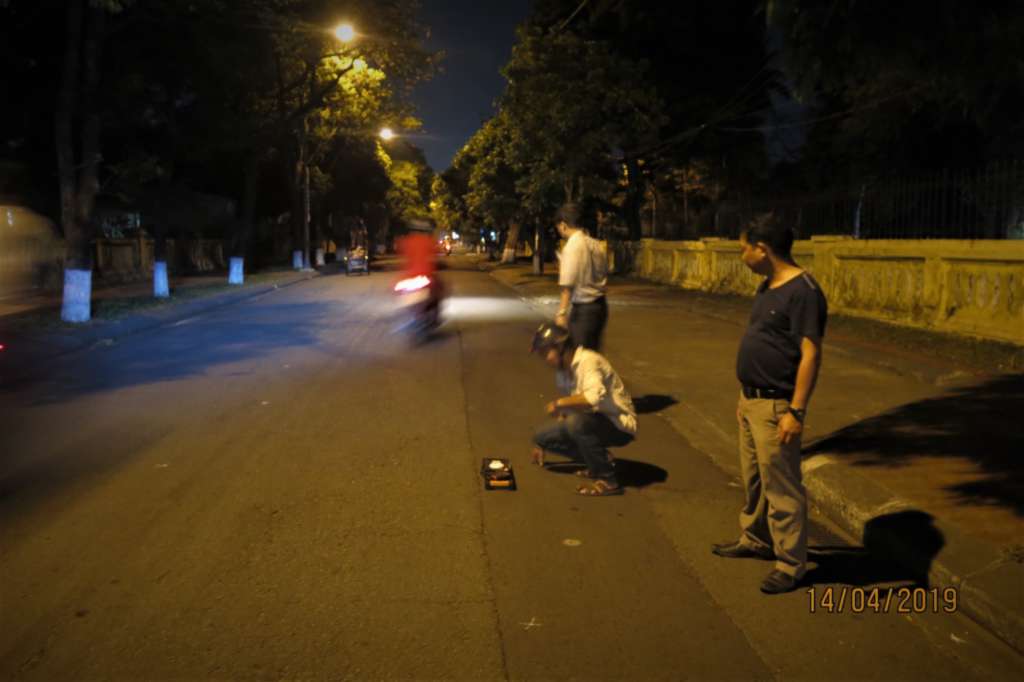
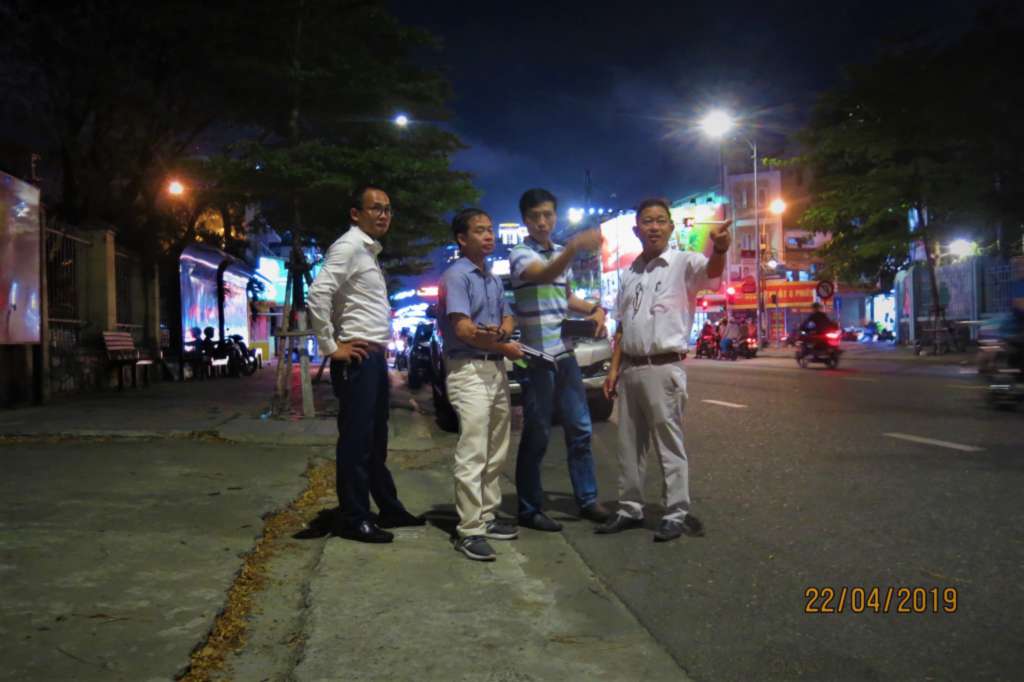 Technical staff from LuxDev and Hue City Construction Investment Project Management Board surveying the lighting status of streets in Hue City.
Technical staff from LuxDev and Hue City Construction Investment Project Management Board surveying the lighting status of streets in Hue City.An important insight gained from surveys done is that conventional inefficient fluorescent lamps are still primarily used in classrooms, and that there is a lack of awareness among students and school staff on the difference between conventional and LED lights, and on the importance of adequate lighting levels classrooms.
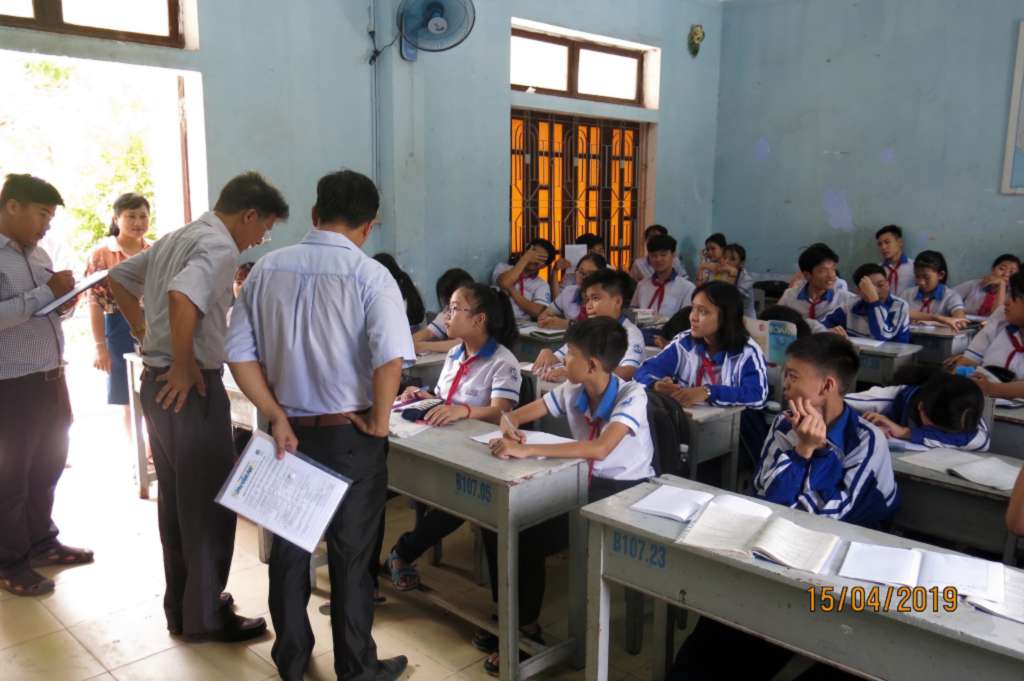
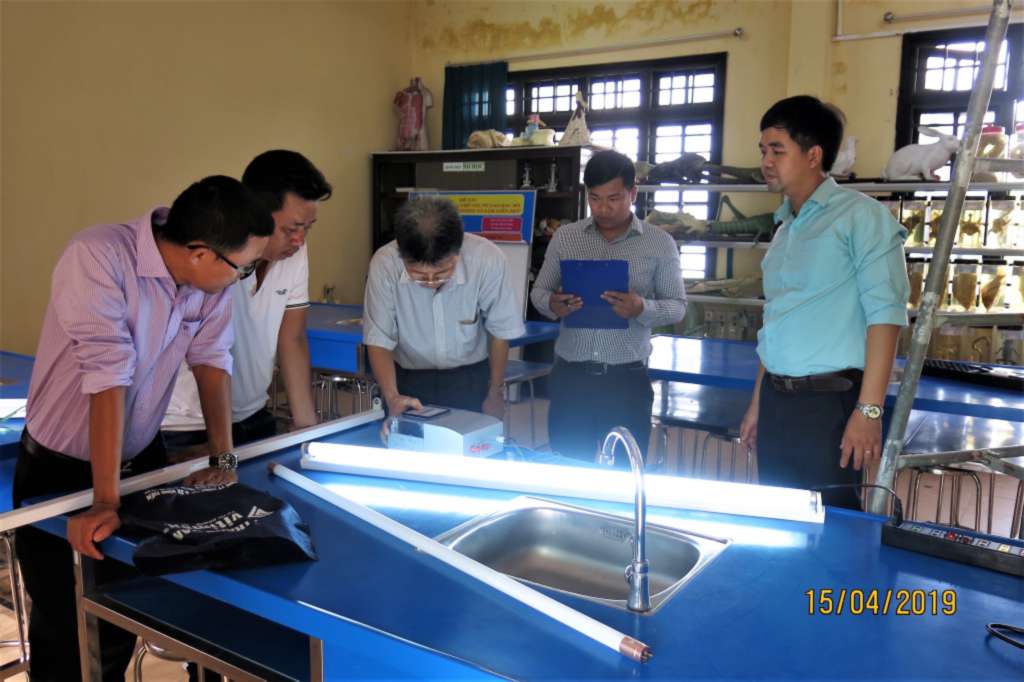 Technical staff from LuxDev and Hue City Construction Investment Project Management Board and the Hue Department of Education and Training surveying the lighting status of schools in Hue City.
Technical staff from LuxDev and Hue City Construction Investment Project Management Board and the Hue Department of Education and Training surveying the lighting status of schools in Hue City.The LED hardware installation and awareness raising interventions of VIE/401 have become even more relevant in the context of the new Vietnam Energy Efficiency Programme 2019-2030, launched in March 2019. Some of the objectives in that programme are that 60% of schools are reached with communication and teaching activities on efficient use of energy, and 90% of provinces have an energy efficiency plan by 2025. LuxDev is committed to assist the provincial government of Hue in achieving these targets.
A new climate cooperation between Luxembourg and Vietnam
On Monday 18 June 2018, Hue City celebrated the closing of the 5-year ODA-funded ‘Climate Adapted Local Development and Innovation Project’ (VIE/033), and in the same event launched the very first two projects funded by the Luxembourg Climate and Energy Fund to be implemented by LuxDev. These two new interventions are the ‘Energy Efficient Lighting NAMA pilot in Hue City’ (VIE/401) and the project ‘Climate Adaptation and Resilience in TT Hue Province’ (VIE/433).
The event brought together high-level delegates from the Ministry of Planning and Investment, Thua Thien Hue (TT Hue) Provincial People’s Committee (PPC) and relevant departments, the Luxembourg Embassy in Laos, LuxDev HQ and regional office in Vientiane, VIE/033 project partners and staff from the project’s target districts, some community representatives and beneficiaries, as well as some old ‘Friends of the Project’.
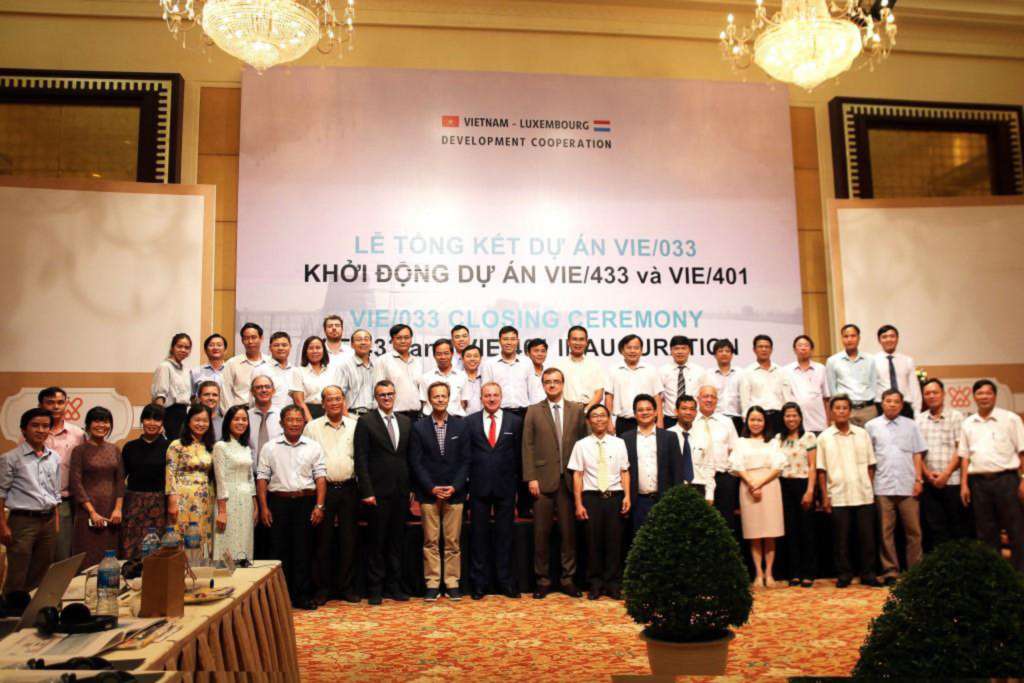 Group photo
Group photoMr Nguyen Van Phuong, Vice-Chairman of TT Hue PPC, and Mr Claude Jentgen, Chargé d’Affaires at the Luxembourg Embassy in Laos, both highlighted and appreciated the long-standing and strong diplomatic relations between the two countries, with the 45th anniversary of these relations having been celebrated in Hanoi just days ago. Mr Jentgen remarked that Luxembourg is the fifth biggest European Union investor in Vietnam, and further reiterated that whereas its Official Development Assistance (ODA) is phasing out with Vietnam having reached middle-income status, new opportunities arise to transform the long-standing partnership into climate cooperation.
Dr Alain Jacquemin, VIE/033 Chief Technical Coordinator, presented the overall results of the project, measured through a set of 27 quantitative indicators. Out of these, 23 met or exceeded their End of Project (EOP) target – including six exceeding that target by 20-50%, and five by more than 50%. Four indicators did not meet their target. Further, data from a Randomised Control Trial in communes outside of the project target area and collected through baseline and endline surveys, gave more evidence and valuable insights on the real impact of project interventions in target areas versus non-project areas, reflecting major differences on household incomes and poverty reduction rates, as well as on the coping capacity of communities and households to respond to climate impacts.
Dr Adam McCarty, Team Leader of the project final evaluation and earlier also the Mid Term Review, called VIE/033 “an extraordinary success” referring to its key results, both quantitative and qualitative, as observed first-hand in the field and measured through the project’s elaborate monitoring system. He highlighted and appreciated the fact that the project did not just focus on its many successes, but also took the initiative to study and investigate activities that didn’t go as planned, rather than ignoring them, thus turning them into ‘lessons learned’ for future interventions.
Subsequently, the audience listened to a brief account by one of the district leaders, and to three testimonials from project beneficiaries. This was followed by the formal launch of the Project Compendium, a document that gives a fairly detailed account of overall project results achieved, and WHAT was done, WHY and HOW to come to those results.
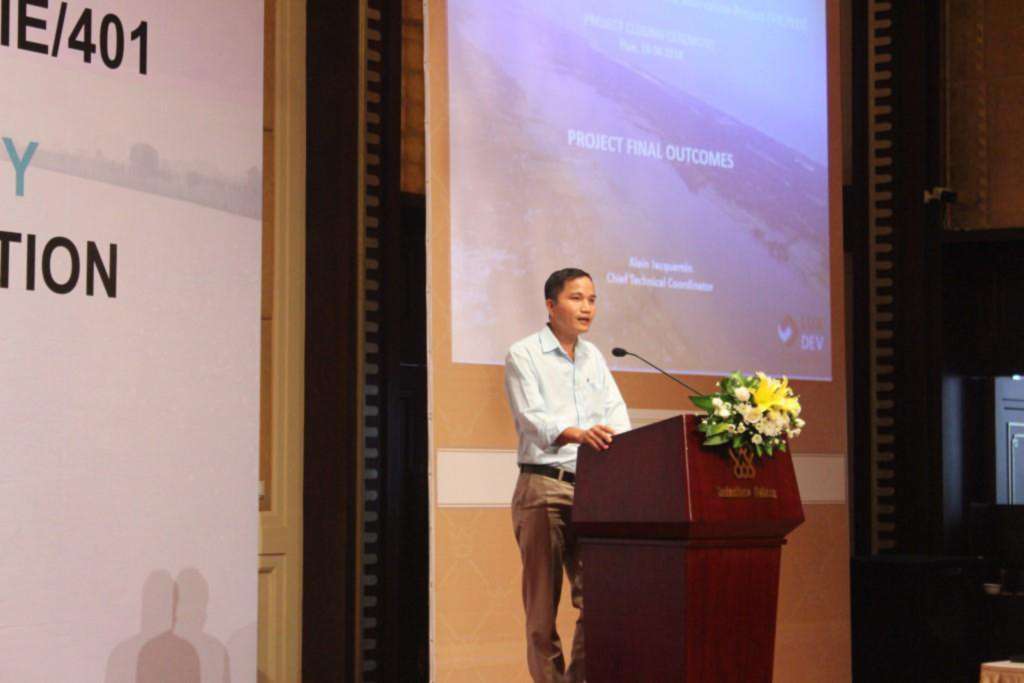 Mr Nguyễn Lương Trí from Quang Tho II Agriculture Cooperative, Quang Dien district
Mr Nguyễn Lương Trí from Quang Tho II Agriculture Cooperative, Quang Dien districtIn the second half of the meeting, with focus on the two new climate interventions in TT Hue, Dr Phong Tran of the Institute for Social and Environmental Transition–International (ISET-Viet Nam) sketched the context of climate change in Vietnam and Hue. He highlighted that Vietnam is one of the most vulnerable countries to the threats of climate change, mainly due to its densely populated and long coastline that is highly exposed to typhoons and sea level rise. “The sea level in Thua Thien Hue could rise by up to 94cm by 2 100 and this would continue to seriously affect the lives, incomes and health of local people, as well as the ecosystems and infrastructure systems of Hue City as they have done in the past”, he said.
The new chapter in the cooperation between Luxembourg and Vietnam was opened up by Mrs Dieschbourg, Luxembourg’s Minister for the Environment, who, through a 15-minute video message, pointed out that “this first bilateral climate cooperation can be instrumental for Vietnam to enhance its climate-finance readiness and be first-mover in terms of accounting, monitoring, reporting and verification of climate finance. In this sense, this little step will help to build international climate cooperation trust and practice. Luxembourg is at your side fighting climate change“.
Extract of the video speech by Mrs Dieschbourg, Luxembourg Minister for the EnvironmentSubsequently, Mr Nguyen Quang Cuong, Vice-Director of the provincial Department of Planning and Investment and Director of the Luxembourg Projects Management Board, briefly introduced the two new projects to the audience, and confirmed that both are in a position to bank upon the effective institutional structure, operational systems and implementation mechanisms that were put in place by VIE/033.
In his closing remarks, Mr Gaston Schwartz, Managing Director of LuxDev, once again highlighted the importance of monitoring and stated that “the methodology and the way that monitoring has been done in project VIE/033 should be an inspiration for LuxDev colleagues in other countries”.

